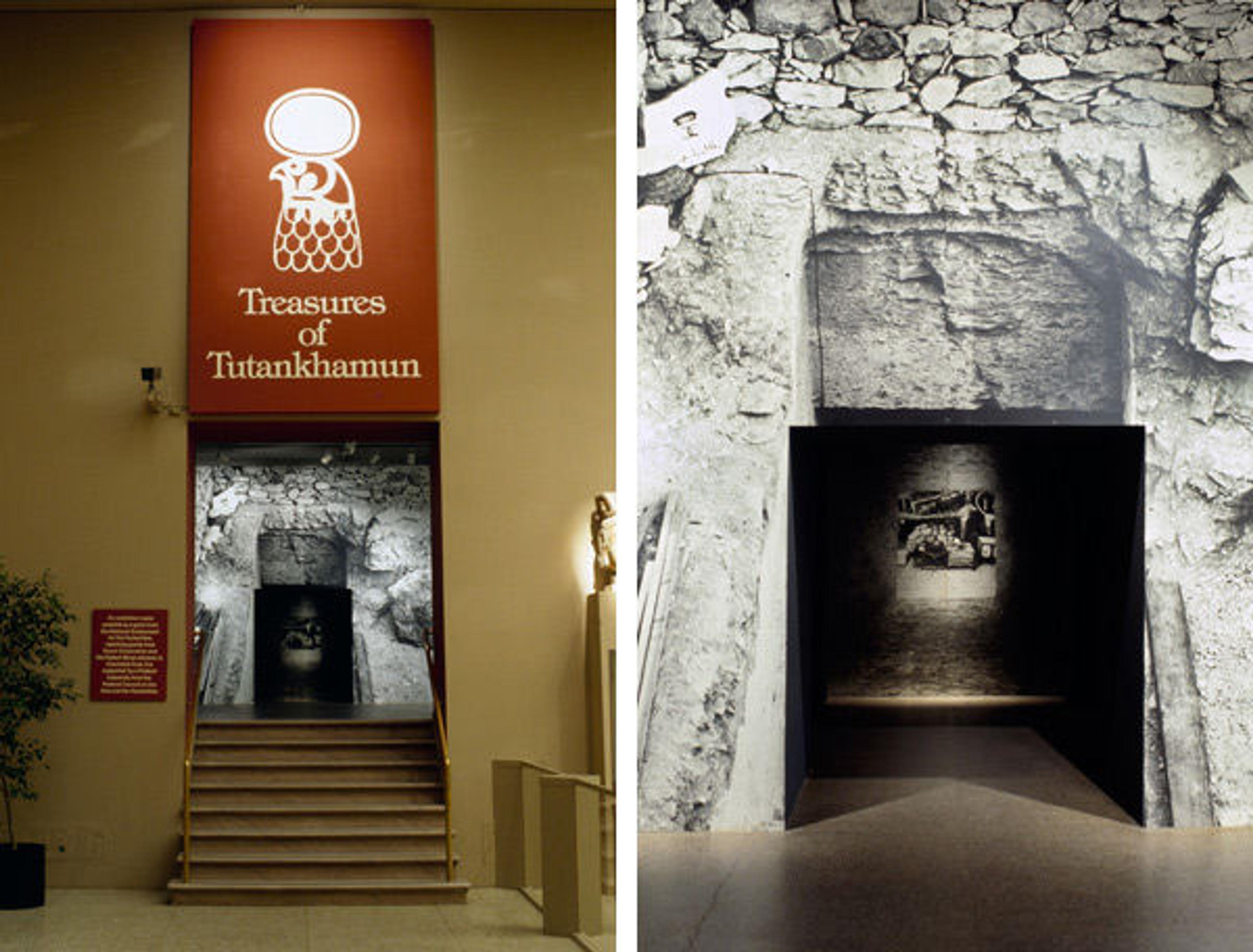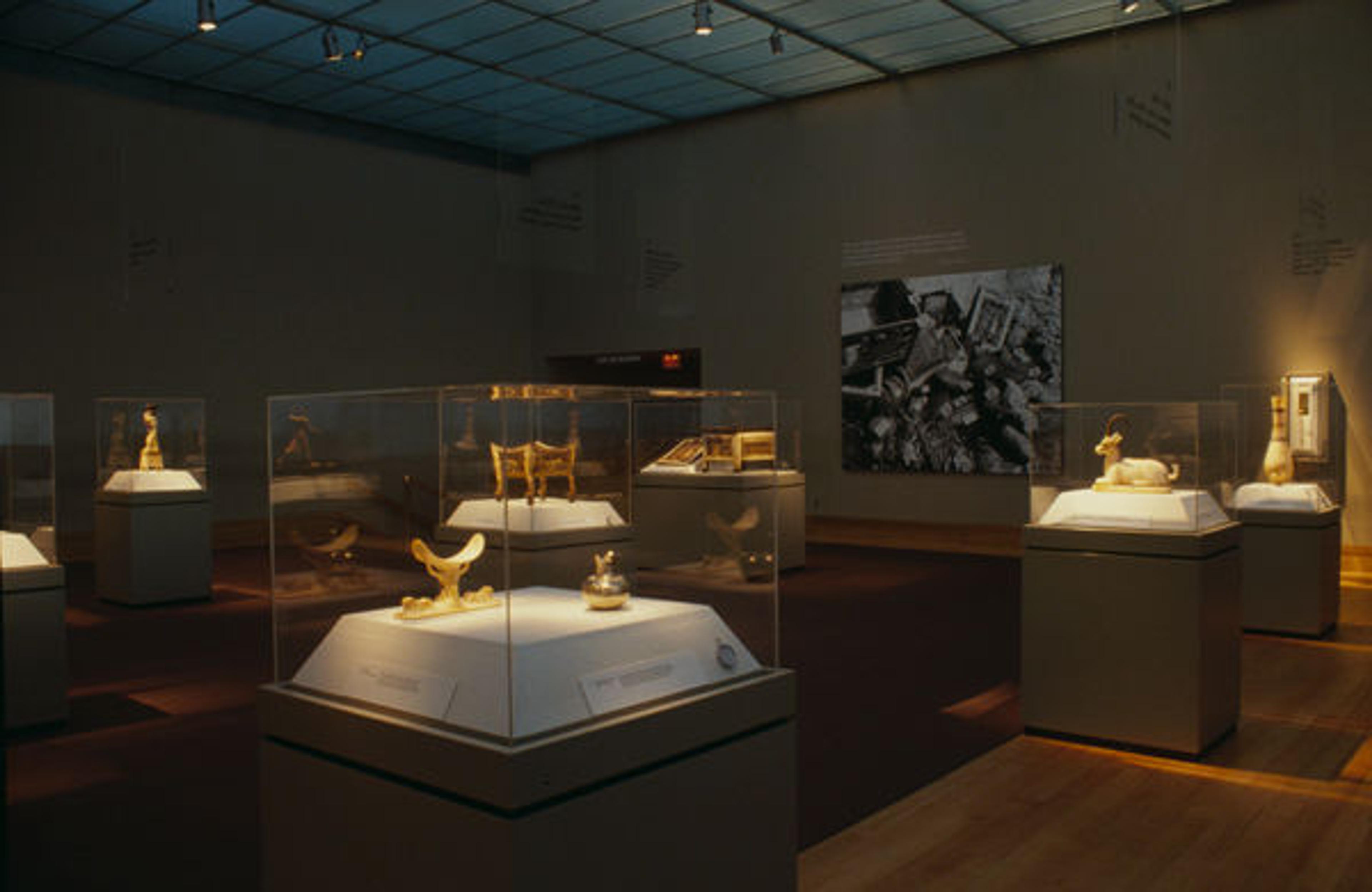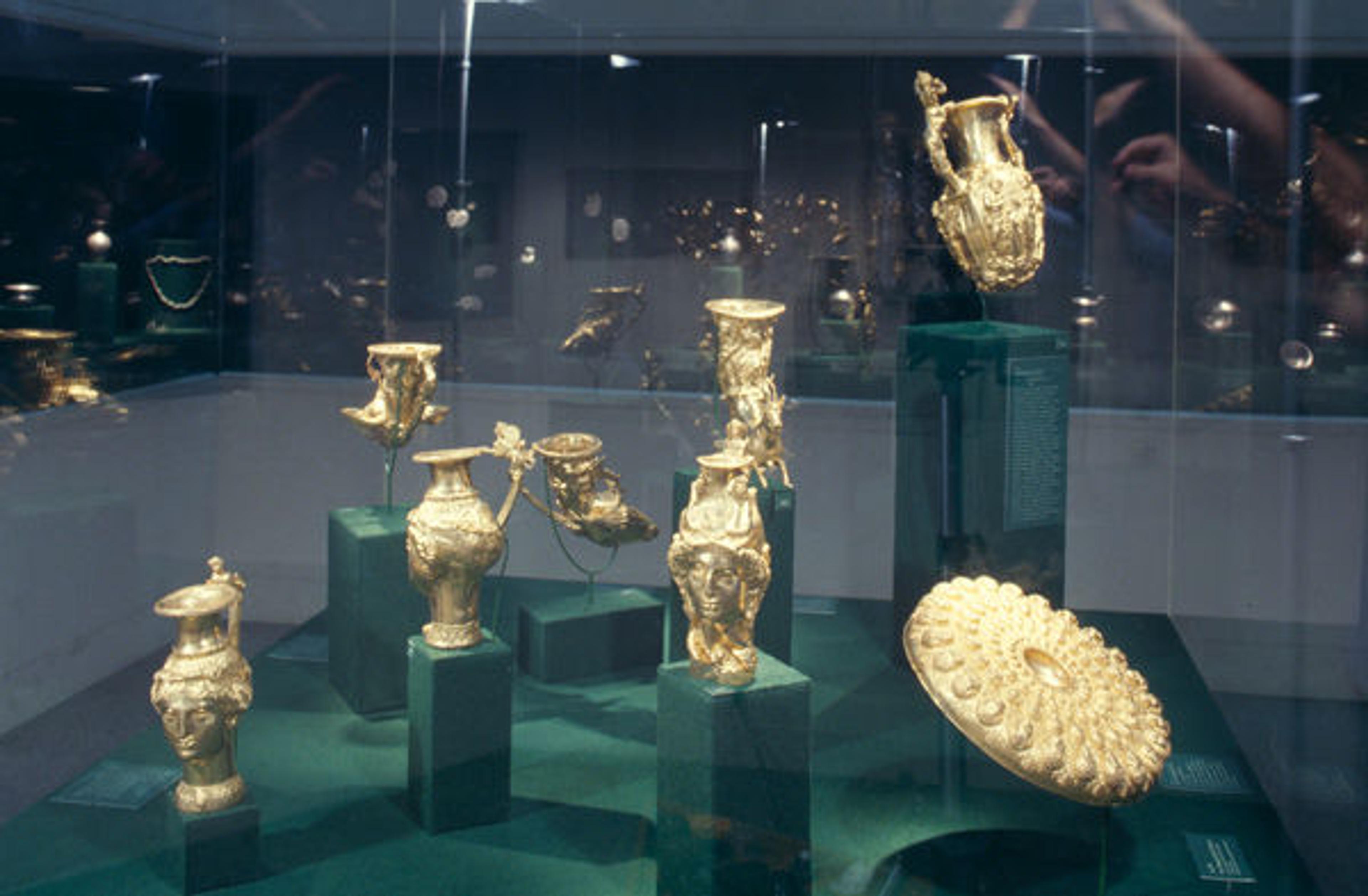My Met: Peter Hristoff's Connections with the Museum

Left: View of the entrance to the exhibition Treasures of Tutankhamun, on view December 20, 1978–April 15, 1979. Photo by Al Mozell. © The Metropolitan Museum of Art. Right: Photo mural of the entrance to the tomb featured in the exhibition Treasures of Tutankhamun. Photo by Al Mozell. © The Metropolitan Museum of Art
«As an artist in residence at The Metropolitan Museum of Art, I was recently asked what the Met means to me and about my relationship to the Museum. My professional relationship with the Met began in 1978, during my junior year at the School of Visual Arts. I say "professional" because that was when I, a young art student, first used the Museum as a resource for images to create new work.»
I had visited The Treasures of Tutankhamen—my first time visiting one of the Museum's "blockbuster" exhibitions—and was inspired, excited, and moved by the exhibition. The feelings I encountered during my time in the exhibition galleries ultimately generated a painting of King Tut, which is now long lost, perhaps thankfully so, but certainly not forgotten.

Gallery view of the exhibition Treasures of Tutankhamun. Photo by Al Mozell. © The Metropolitan Museum of Art
Tut-mania was a cultural phenomenon at the time. Not only did the Met's exhibition break attendance records, it also shifted the public's perception of what a museum is and does. The Treasures of Tutankhamen showed that an exhibition could function on many levels: a pop-cultural event with profound economic, social, and political reverberations.
My emotional relationship, my true love affair with the Met, started a bit earlier, when I saw the Thracian Treasures of Bulgaria exhibition one year prior to the Tutankhamen show. The emotional connection was due to the fact that a great New York cultural institution such as the Met was presenting works linked to my heritage. In 1977, much more so than today, Bulgaria was a mystery to most, and often the subject of Cold War jokes.

Gallery view of the exhibition Thracian Treasures from Bulgaria, on view June 11–September 4, 1977. © The Metropolitan Museum of Art
Although I was from Istanbul, as were my parents, we were of Bulgarian heritage—from the land of Thrace. The magnificent objects on display became the physical representation of stories I had heard throughout my childhood but considered myths. It seemed as though I suddenly understood, at just nineteen years old, how a museum, an exhibition, a work of art could help define who you are and where you came from, as well as inspire you.
Related Link
Now at the Met: "Celebrating the Living Traditions of the Islamic World: Meet Artist in Residence Peter Hristoff" (September 18, 2015)
Peter Hristoff
Peter Hristoff is the 2015–16 artist in residence in the Education Department and Department of Islamic Art.